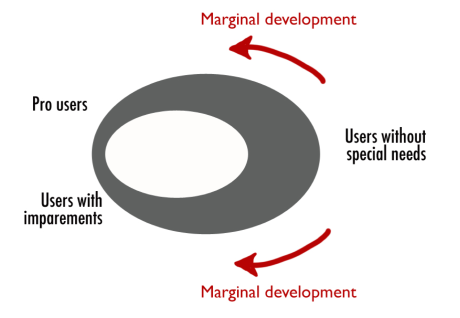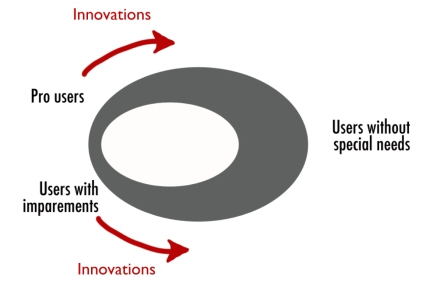Design for All
Design for All is a vision of a world where we see the benefit of diversity - a world in which everyone can participate and contribute - a world where we care for each other and nature.

Traditional design process
The grey area symbolises the whole population. On the right side we have the largest group; people without any special needs. On the top left we have the professional users with special needs owe to intense use of the product, service or environment. In the lower left we have the other group with special needs; people with impairments that influence the interaction. In the traditional design process you start from an existing product and try to improve it by study the users without special needs and then try to involve as many as possible with special needs. The result is usually a marginal development, "redesign" of an existing products.

Design for All process
The Design for All process often leads to innovations. The key is that the starting point is peoples needs instead of existing solutions. By identifying what task existing solutions tries to solve and involve user groups who have the greatest demands in relation to that task, we try to meet the needs of these groups by evaluating sketches, modells and prototypes during the whole design process. Since the final design is adapted to human needs and wishes the relationship between the user and the product becomes so strong that the satisfaction minimises the "wear and tear" behaviour.

